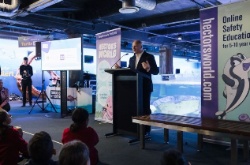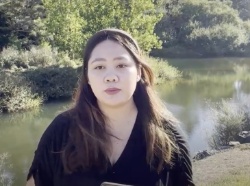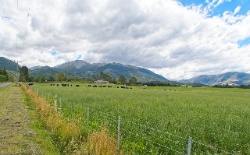Science Communicator Driven By Discovery Adventure
Science Communicator Driven By Discovery And
Adventure
A marine geologist with a passion for exploring submarine volcanoes was this week named Science Communicator for 2003.
Cornel de Ronde, of the Institute of Geological and Nuclear Sciences Limited (GNS) in Lower Hutt, has become a world leader in finding and analysing seafloor hot springs, or hydrothermal vents.
His communication skills have impressed his peers who say he has demonstrated an exceptional capacity to communicate his work to a wide audience.
The annual award was presented by the New Zealand Association of Scientists at a function in Auckland on Thursday.
The Association said Dr de Ronde's confidence and competence in using the media to communicate his work had played a major role in enabling the public to become informed and enthusiastic about science.
Dr de Ronde, who has made numerous trips to the bottom of the Pacific Ocean in Japanese and American research submersibles, believes an important part of being a scientist is communicating his work to the public.
" I believe scientists have an obligation to communicate their work well beyond the science community.
" In my earlier days I used to explain all my work to my grandmother and I figured if she could explain it to her neighbour so that it was understood, then I was probably on the right track
" As a scientist, I'm driven by discovery, adventure, seeking answers and communicating the results. I also like an element of risk. Exploring the seafloor in a submersible is the complete package."
In 1998, Dr de Ronde became the first person to explore the bottom of Lake Taupo in a submersible.
As well as discovering a new species of freshwater sponge, he found that the deepest part of the lake was actually 20m deeper than shown on charts.
" We're still not sure if the original charts were inaccurate, or if parts of the lakebed are collapsing because of active faulting in the Taupo area.
" We know that parts of the lakebed are rifting apart, so it's quite possible that slumping is occurring on the lakebed."
A television documentary he helped to make about his exploits in Lake Taupo has given him the desire to make more television programmes about earth sciences.
He believes a documentary about exploring offshore hydrothermal vents would have wide appeal. Although he has support from a couple of documentary makers, finding the financial backing has been difficult.
The recent discovery of intense hydrothermal venting along parts of the 2500km-long Kermadec arc, northeast of New Zealand, has been a source of satisfaction and pride for Dr de Ronde.
Until he and his colleagues started systematically exploring the seafloor along the Kermadec arc in 1999, it was not known how much active seafloor volcanism there was in this part of the world.
Sixteeen of the 26 large seafloor volcanoes he and his colleagues have studied so far are active and emitting huge volumes of dissolved minerals into the Pacific Ocean from seafloor hot springs. Some of submarine volcanoes they have studied are equivalent in size to Mount Ruapehu.
With modest resources, Dr de Ronde and his small team have shown that the Kermadec arc, between New Zealand and Tonga, is the most active arc volcano chain in the world.
" We've awoken a sleeping giant. The Americans have recently decided to follow our lead and devote their entire resources to investigating seafloor arc volcanoes, mainly in the western Pacific region."
He believes the implications of hydrothermal venting from arc volcanoes are only just being recognised.
Apart from the massive mineral deposits they produce on the seafloor, there are scores of yet-to-be-identified life forms associated with the vents. They range from single-celled organisms to much larger creatures. Some scientists argue that the first life forms on Earth would have developed around hydrothermal vents.
The vents are also important sources of trace elements such as iron and manganese in the ocean. This influences ocean chemistry and, ultimately, the marine food chain.
" One of the many attractions of submarine volcanoes and hydrothermal vents is that so little is known about them. I feel humbled and privileged to explore such pristine and unusual places.
" Something that always strikes me is that when we're on the bottom of the ocean in a submersible, we don't see much life. But as soon as we arrive at a hydrothermal vent, there is an explosion of life.
" It's remarkable that so many organisms thrive in
such a hostile environment." Dr de Ronde and his
colleagues hope to bring a deep-sea submersible to New
Zealand within the next few years to closely investigate
and film the submarine volcanoes they have studied from
surface ships during the past four years.


 Citizens of the Sea: Sailors To Revolutionise Our Understanding Of Pacific Biodiversity
Citizens of the Sea: Sailors To Revolutionise Our Understanding Of Pacific Biodiversity Netsafe: Making A Splash With Online Safety: Netsafe Launches New Flagship Programme For Kids
Netsafe: Making A Splash With Online Safety: Netsafe Launches New Flagship Programme For Kids NZGBC: Flood Resilience PhD Student Widi Auliagisni Named Future Thinker Of The Year 2024
NZGBC: Flood Resilience PhD Student Widi Auliagisni Named Future Thinker Of The Year 2024 Business Canterbury: European Free Trade Agreement A Game-changer For Canterbury
Business Canterbury: European Free Trade Agreement A Game-changer For Canterbury Business Canterbury: Urges Council To Cut Costs, Not Ambition For City
Business Canterbury: Urges Council To Cut Costs, Not Ambition For City Wellington Airport: On Track For Net Zero Emissions By 2028
Wellington Airport: On Track For Net Zero Emissions By 2028



